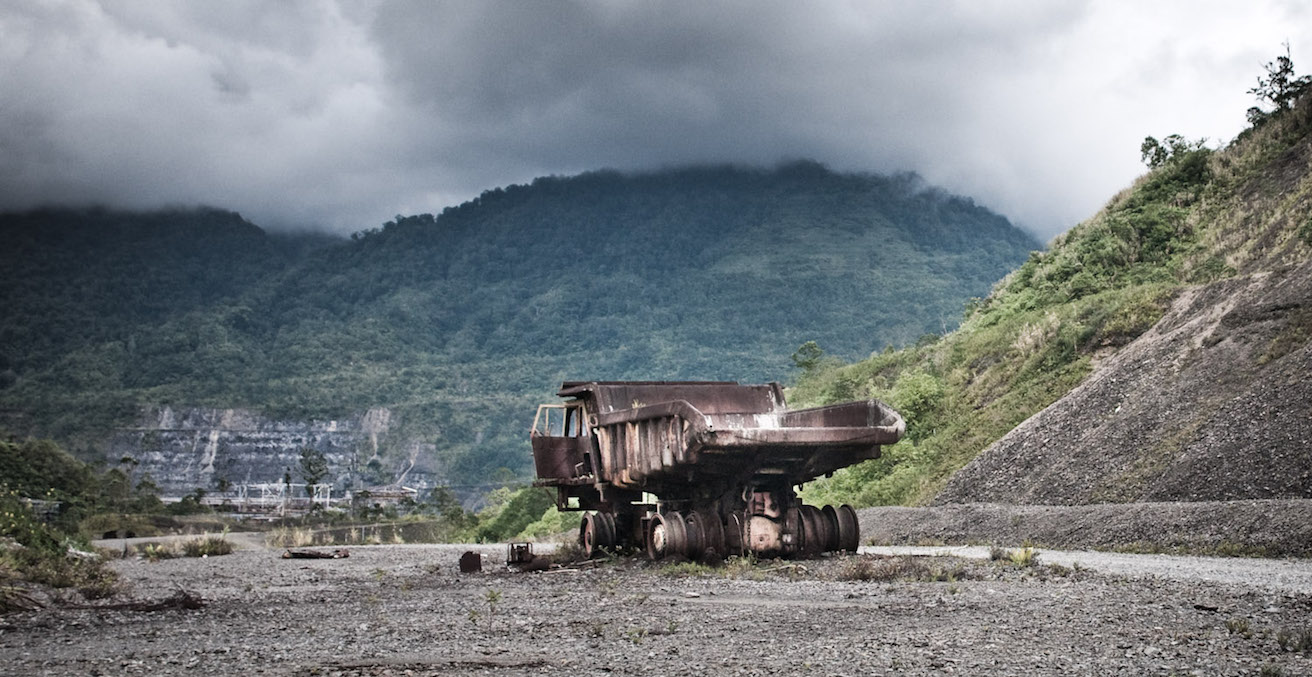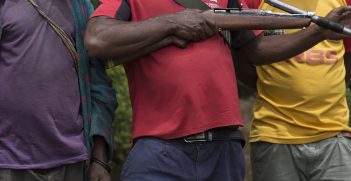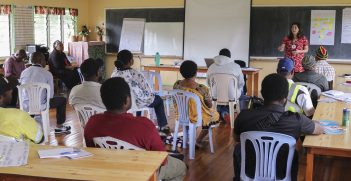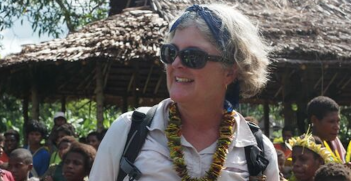Bougainville: Reopening Mine Risks Reopening Old Wounds

The 2019 Bougainville referendum could see the controversial Panguna mine reopened, offering both attractive opportunities and terrible consequences.
In January 2018, the autonomous Bougainville government introduced a moratorium on mining at the Panguna mine, which had been at the heart of the secessionist conflict between the Bougainville Revolutionary Army (BRA) and the Papua New Guinea (PNG) government.The Panguna mine was opened in 1972 but, after more than a decade of bitter and violent conflict, it closed in 1989. In December of 2017, the Bougainville government held a meeting to receive bids for licences in order to reopen the mine but split results and heightened tensions from old scars resulted in the moratorium.
With the proposed independence referendum scheduled for June 2019, Bougainvillean leaders are eager to restart the mine in order to boost revenue. According to Bougainville President John Momis, “Panguna is a very, very difficult issue for all the things that happened in the past… maybe we were pushing things too hard because of our desire to meet our fiscal self-reliance target.” But Momis acknowledges the danger of more conflict, stating “If we went ahead now, you could be causing a total explosion of the situation again.”
The depth of the divisions lie in the conflict of the 1980s. Land-related grievances were the tangible causes of tensions underlying the Bougainville conflict. The problematic nature of the Panguna mine is best understood through an appreciation of Bougainvillean land ownership. The diversity in customs and culture between the numerous Bougainvillean societies makes it difficult to determine a blanket Bougainvillean system of land custodianship; however, most groups are characterised by a communal ownership of land distributed on a matrilineal or patrilineal basis. Emphasis is placed on the security of land, whereby outsiders are forbidden to enter lands without a clan leader’s or landowner’s permission.
Internal conflict surrounding the Panguna mine arose for a variety of reasons. Firstly, Bougainvillians do not have a unified political identity. Any shared sense of identity arose as a result of unity against non-Bougainvilleans. Secondly, the introduction of a plantation economy following World War II destabilised Bougainville’s traditionally cohesive communities which were based around shared and rotational use of land. The shift from a subsistence economy to cash cropping effectively froze the cycle of land distribution, meaning those who had access to land at that point were able to reap economic benefits while others were left with nothing, leading to internal divisions. When the Panguna mine was established in the 1970s, these existing inequalities and tensions were aggravated to an unprecedented level, one of many catalysts for the full-blown conflict that ensued.
On an external level, European concepts of land tenure were unable to comprehend the complexities of customary land rights, which meant that the royalties for the mine were paid in such a way that was unsatisfactory to many Bougainvilleans. A particular point of contention were the actions of Australian patrol officers who incorrectly registered men as titleholders, despite matrilineal systems of land ownership. The negotiations between the PNG government and the Australian-owned Bougainville Copper Limited (BCL) were conducted according to Australian law with minimal consultation with Bougainvilleans. This treatment reinforced the resounding sentiment in Bougainville that the island is a backwater of PNG, neglected and ignored.
BRA leader Francis Ona once said, “Land to us is our lifeline, and we cannot be separated from it”; the connection Bougainvilleans have with their land is not a concept commonly understood in the West. In addition to disproportionate and inappropriate compensation payments for land use, the developers of the Panguna mine showed a significant lack of appreciation for the Bougainvilleans’ depth of attachment to the land.
In addition to the land destroyed in the creation of the mine, there were numerous issues associated with waste disposal stored on the banks of the Kawerong or washed into the Jaba River, substantially increasing its flow and poisoning its waters.
In 1998, Paul Lapun, former MP for South Bougainville asked: “What happens when the gold and copper finishes? You will leave with your money and I will be left with a barren wasteland.” The waste disposal systems were stored on the banks of the Kawerong and the waste that washed into the Jaba river increased its flow and poisoned its water. As well as destroying the environment, this issue also speaks to a broader sentiment within Bougainville that they were only of concern to PNG or to Australia so long as their resources could be exploited.
Today, the motivation for reopening the mine is perhaps the opposite. Local Bougainvillean leader Philip Miriori said “the Panguna mine must reopen. That is going to bring prosperity. We need to see our kids go to school. We need better hospitals, better infrastructure.” A number of local landowners are now pushing for the reopening in order that their people can reap the benefits this time around. While the desire for more revenue and improved development is understandable, it is impossible to see how mining could resume without causing major conflict, given the deep divisions that persist within Bougainville. Other citizens disagree wholeheartedly with Mr Miriori, with local resident Bernadine Kama expressing her concern at the potential reopening, “We’ve already seen the damage and destruction done to our land”.
Whether or not the Bougainville government maintains its moratorium on mining at Panguna, these issues are sure to emerge again in the coming months as pressure builds for new revenue and the referendum draws closer. Tensions are certain to resurface as talks of independence become more serious. For Australia, it is important that the region remains stable. However, any engagement with the situation must be in the context of a relationship very different to the one at the first opening of Panguna mine.
Lauren Skinner is a fourth-year law and international relations student at the ANU. She is a researcher at the AIIA national office.
This article is published under a Creative Commons Licence and may be republished with attribution.





